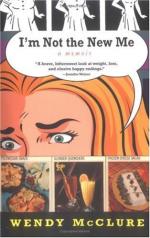With this fact established, it followed, in Mr. Eddy’s opinion, that it was perfectly possible to use kites in making weather prognostications; and, indeed, he has been doing this himself for several years with the best results. Whenever his kite-thermometers, sent to a fixed height which he determines independently by a specially devised kite-quadrant, show actual readings which are either warmer or cooler than the theoretical readings, he prophesies that the weather will, within a few hours, become warmer or colder at the earth’s surface, and these prophecies are fulfilled in a large majority of cases. If the kite-thermometers show exactly the temperature which the law would call for, he prophesies that there will be no change in the weather.
[Illustration: CITY HALL PARK AND BROADWAY FROM A KITE.
From a photograph taken from a kite by Mr. W.A.
Eddy. City Hall Park,
New York City, appears in the foreground, with Broadway
back of it.]
It has also been demonstrated that kites may be used by meteorologists to indicate the approach of storms, which they foretell by a sudden and continuous veering over a considerable arc, usually about sixty degrees. This veering begins usually six or seven hours before a storm, and often as much as twelve hours. And another sure sign of a storm is the continuous and sudden dropping of the kites followed by a quick recovery, which shows that the wind is blowing in gusts interspersed with periods of calm.
In making a series of meteorological experiments which he conducted at the Blue Hills Observatory, Mr. Eddy often employed as many as eight or ten kites; and in August, 1895, he sent up twelve kites on one line, three of them being nine-footers. This is probably the largest number of kites ever sent up in tandem; and although on this occasion the line carried only the thermographs suspended in a basket, the whole weighing not more than two pounds, a very much larger load might have been carried, had it been desired.
[Illustration: Murray Street. Warren Street.
MURRAY AND WARREN STREETS, NEW YORK CITY, FROM A KITE.
From a photograph taken from a kite by Mr. W.A. Eddy, showing Murray and Warren Streets, New York City, as they run west from Broadway.]
Among many other curious things about the wind observed by Mr. Eddy, is the fact that the night winds are by far the steadiest and most satisfactory for kite-flying. On this account much of his work with kites has been done in the darkness, although he uses lanterns on the lines to assist him in locating the kites. It has also been demonstrated that the force of the wind increases steadily as the distance from the earth increases. Archibald proved this conclusively, by suspending a series of wind-measuring instruments at intervals along the main line, their registration showing almost invariably greater wind pressure at the higher altitude. Mr. Eddy has furthermore noted that, while the early morning wind is usually very light at the earth’s surface, it is almost invariably good aloft; and he has again and again verified the well-established fact that all clouds herald their approach and are accompanied by increased wind velocity.




